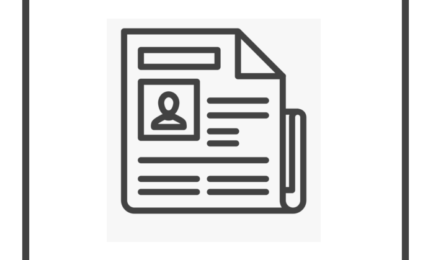
By: Jim Pelletier, Lead Product Manager at Wolters Kluwer TeamMate
Organizations are facing an escalating challenge in the form of climate risk and the potential disruption it represents. Businesses are experiencing increased physical and transitional risks, impacting financial stability and operational continuity, and calling long-term strategic direction into question. Internal audit, uniquely positioned to provide assurance and insights, can help organizations navigate these complexities, ensure compliance with evolving regulations, and enhance and protect long-term value.
Addressing climate risk is a strategic imperative
Research from S&P Global shows that 92% of the world’s largest companies will have at least one asset at high exposure to a climate change physical hazard by the 2050s. This demonstrates that addressing climate risk proactively is a strategic business imperative in order to enable sustainable, resilient growth. By integrating climate risk considerations into strategic planning and operations, companies can better anticipate and mitigate disruptions, identify opportunities for innovation and efficiency, and secure long-term value creation and protection.
Internal Audit’s Crucial Role
Internal audit is uniquely suited to provide valuable assurance and insights on climate risk management due to its objectivity, deep organizational knowledge, and holistic perspective. Auditors can evaluate the effectiveness of climate risk governance, ensure compliance with disclosure regulations, and offer strategic recommendations that align risk management with business objectives.
New data from American Institute of Certified Public Accountants (AICPA) and the Chartered Institute of Management Accountants (CIMA) shows that 49% of the organisations based in the EU or with EU operations consider climate risk a top 10 organisational concern. To address this concern, internal audit can ensure organizations have robust frameworks to assess, report, and mitigate climate risks, enhancing organizational resilience and stakeholder trust. By proactively identifying and auditing processes related to climate risk, internal audit can assist senior management and the board in confidently navigating complex challenges and capitalizing on emerging opportunities.
To effectively support their organizations, internal auditors can take a more active role through partnering with sustainability teams, finance and leadership.
Develop Climate Risk Competency
Internal audit must deepen its understanding of climate-related risks and regulatory expectations. Training programs, leveraging external expertise, and staying abreast of evolving best practices can equip auditors to provide insightful and informed assurance. With that knowledge, auditors can begin mapping which business process impact or are impacted by climate risk.
Assess Governance and Risk Management Frameworks
Auditors should identify and evaluate the efficacy of governance structures related to climate risk, including clear accountability, roles, and responsibilities. This should include transparency around the involvement of senior leaders in actively incorporating climate risk into long term decision making.
Review Integration of Climate Risk into Existing ERM Practices
Evaluate how climate risks are integrated into existing enterprise risk management practices, ensuring processes are robust and comprehensive. This includes examining scenario analysis, assessing the quality of underlying data used for climate modeling and projected exposure, and reviewing assumptions for stress testing and strategic planning.
Audit Climate-Related Disclosures
Given increasing regulatory scrutiny, internal audit should provide assurance over the completeness, accuracy, and reliability of climate disclosures in conformance with established reporting standards such. Auditors should evaluate whether disclosures appropriately reflect the organization’s climate risk exposure, mitigation strategies, and financial impact.
Evaluate Data Quality and Analytics
Internal auditors can champion the use of high quality data and advanced analytics to enable evidence-based insights as businesses seek to understand and adapt to their exposure to the physical risks of climate change. Climate data that incorporates both risk exposure scores, describing the exposure of an asset or company to climate change hazards, and financial impact metrics reflecting the projected future financial costs of changing hazard exposure is crucial for informed decision making and robust disclosures. Internal auditors should evaluate the organization’s existing capabilities and identify opportunities for improvement.
Foster Collaborative Partnerships
Climate risk management demands cross-functional collaboration. Internal audit should actively build relationships with sustainability teams, risk management, finance, operations, and compliance to ensure cohesive and aligned risk strategies. An integrated approach will reduce duplicative work, enhance reporting to senior leadership, and reduce assurance fatigue across impacted front-line operations.
Providing Assurance and Strategic Insights
Internal audit’s contribution should rise above traditional compliance-focused assurance. By providing strategic insights on climate risk, auditors help the organization align its risk profile with strategic objectives, identify efficiencies, and uncover opportunities to identify and adopt innovative practices that could give their organization a strategic advantage.
Protecting and creating long-term value
Climate risk presents a significant and complex challenge, requiring organizations to adopt proactive and strategic approaches. Internal audit plays a critical role, offering essential assurance, compliance oversight, and valuable insights into managing climate risks and opportunities effectively. By expanding their capabilities, deepening their understanding, and engaging proactively across the organization, internal auditors can help safeguard their organization while contributing to sustainable growth, resilience and enduring long-term value protection and creation.
About the author
Jim Pelletier is Lead Product Manager at Wolters Kluwer TeamMate and has over 20 years of internal auditing experience in both the public and private sectors.
Wolters Kluwer TeamMate business unit is part of the Wolters Kluwer Corporate Performance & ESG (CP & ESG) division. The division is the world’s leading provider of integrated software solutions for EHS, ESG, Corporate Performance Management and Audit and Assurance. Through innovative technology and unique expertise, Wolters Kluwer CP & ESG solutions enable business leaders to drive financial and sustainability performance, manage risks, meet reporting requirements, improve safety and productivity, and reduce environmental impact.



